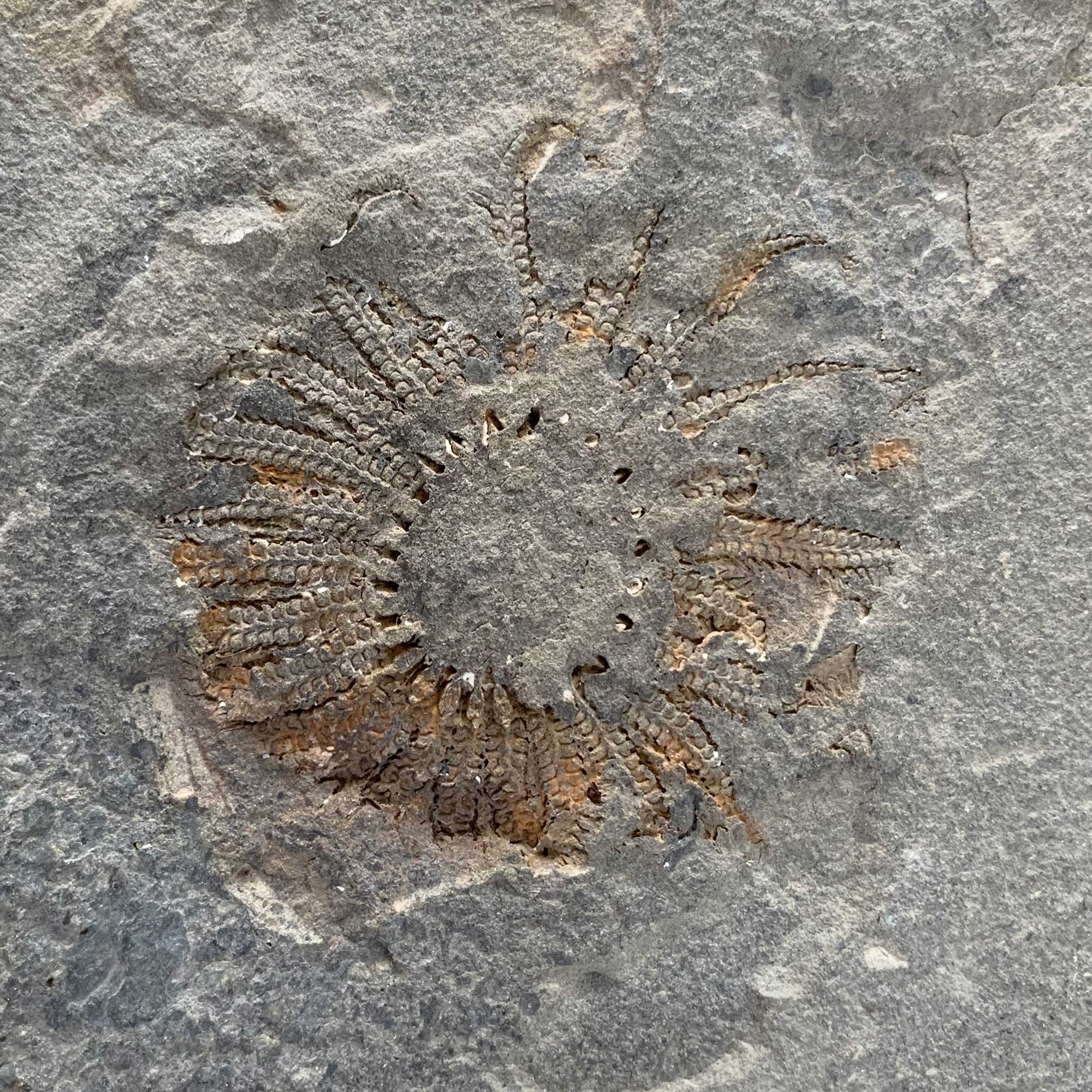Echinoderms
Echinoderms
The most familiar modern echinoderms are starfish, sea urchins, and sand dollars, but other modern forms include sea cucumbers and sea lilies, which are scientifically known as crinoids. Crinoids are the most commonly encountered Devonian echinoderms in New York rocks. Like some of their modern relatives, Devonian crinoids had a root-like base that was connected to a long stem that was topped by feather-like arms that the animal used to deliver food to its small, centrally-located mouth. The thin skin that covers crinoids decomposes very quickly following death, causing these small segments to scatter quickly on the seafloor. Most crinoid fossils consist of these isolated, individual segment pieces. If a crinoid was buried very quickly, however, most of its skeleton may be preserved.
Fossil starfish (or, sea stars, scientifically known as asteroids) are much less commonly encountered in the Devonian of New York, but their fossils are occasionally found. Some show the characteristic five arms that are common in many modern species.






